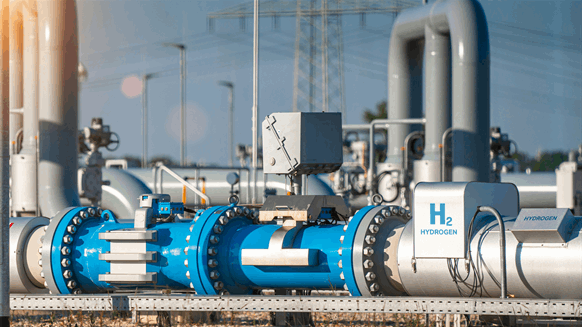The US Department of Energy (DOE) on Monday released the national roadmap for expanding the clean hydrogen industry, aiming to increase production to 10 million metric tons (MMT) per year by 2030
To help the world’s largest economy make its grid carbon-free by 2035, the National Clean Hydrogen Strategy and Roadmap aims to accelerate “the production, processing, delivery, storage and use of clean hydrogen,” the DOE said in a press release. opens on Monday
The roadmap is mandated by the bipartisan Infrastructure Act, which has established $8 billion in 2022-26 funding for the establishment of so-called regional clean hydrogen hubs, or networks “of clean hydrogen producers , potential consumers of clean hydrogen and located connecting infrastructures”. very close,” as stated in the legislation passed in November 2021.
“This roadmap will align the public and private sectors on a shared path to drive faster toward a cleaner and more secure energy future,” Assistant to the President and National Climate Advisor Ali Zaidi said in the announcement.
By 2040, the roadmap envisages hydrogen production of 20 MMT per year and 50 MMT by 2050.
The latest government data, released on October 1, 2019 by the DOE, puts US hydrogen production at 10 MMT per year. Global hydrogen production was 94 MMT in 2021, according to the International Energy Agency’s 2022 Hydrogen Market Report.
Cost reduction
A key component of the roadmap is reducing the cost of clean hydrogen, with a goal of $1 per kilo by 2030. The DOE under the roadmap supports different ways to produce clean hydrogen, which in their perspective they include production through fossil fuels whose emissions are offset by carbon capture and storage (CCS), in addition to electrolysis and the use of biomass and waste raw materials. The paper describes the components of production through these means where costs could be reduced.
The roadmap recognizes that “cost reduction is not limited to hydrogen production alone.”
“The agencies will continue to strengthen their activities to reduce the cost of all key technologies in the value chain, including reducing supply chain vulnerabilities and boosting domestic manufacturing,” he says.
“The BIL [Bipartisan Infrastructure Law] Provisions for the manufacture and recycling of electrolyzers and clean hydrogen ($1.5 billion over five years), along with annual appropriations, will be used to address this strategy,” the document added.
Makers of electrolyzers and other hydrogen technologies can also qualify for grants for so-called qualified advanced energy projects, which include facilities that recycle energy or provide services to reduce global warming emissions. Of the $750 million specified in the bipartisan Infrastructure Act for such funding for 2022-2026, Treasury and the Internal Revenue Service expect to allocate up to $4 billion in the first round, which is to conclude in March 2024, according to an IRS. notice on May 31.
Current projects
Publicly announced projects to make clean hydrogen in the US from 2022 amounted to 12 MMT per year of potential capacity, the roadmap says.
The DOE announced a $504.4 million loan in 2022 for what it calls the world’s largest clean hydrogen storage facility. The Utah state project owned by Mitsubishi Power Americas Inc., Magnum Development and Haddington Ventures will feed the 840-megawatt Intermountain Power project, which is expected to break ground in 2025.
In the state of Louisiana, Air Products and Chemicals Inc. is building an energy complex that can produce more than 750 million standard cubic feet of blue hydrogen, or hydrogen produced with natural gas whose emissions are canceled by CCS. The company says the complex, projected to become operational in 2026, is the world’s largest carbon capture plant for permanent sequestration.
“Several states and regions across the country are actively pursuing clean hydrogen projects, ranging from production to end-use,” the roadmap says. “The pace of new project announcements is accelerating.”
But many have yet to make final investment decisions, he notes.
“Achieving credit-worthy, long-term acquisition contracts will help ensure that the important production announcement channel reaches the final investment decision,” the paper says.
To contact the author, please email jov.onsat@rigzone.com


